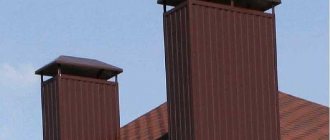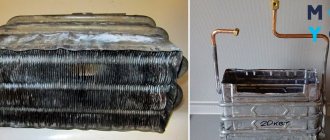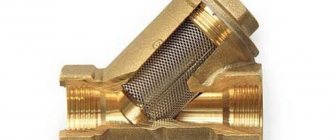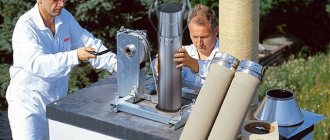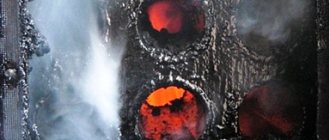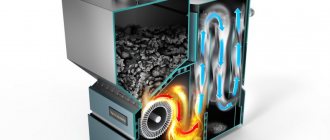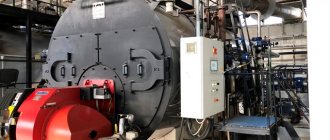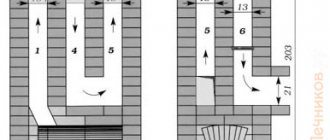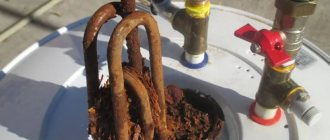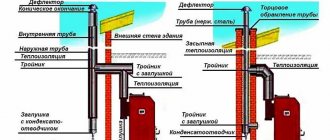Half a century ago, chimney cleaning was commonplace, and almost every owner of a private house knew how to clean a chimney. Now these skills have been mostly lost, but the problem is still relevant. Next, we will analyze in detail all the popular cleaning methods, and home craftsmen will learn how and how to clean a chimney pipe with their own hands.
Good ventilation, cleaning and maintenance of the chimney is the key to the safety of household members and the normal operation of the stove or fireplace
What is soot and how is it formed
Smoke has a complex chemical composition, soot is not completely burned fuel particles; in addition, smoke contains water vapor, hydrochloric acid, a number of organic acids and CO2 or carbon monoxide.
Soot gradually fills the chimney. When hot smoke collides with a cold pipe, condensation settles on the walls of the chimney, and everything that passes by, especially soot, sticks to the condensate.
The worse the pipe is insulated, the more often it is necessary to clean the chimney from soot
That is why the pipe must be insulated along its entire length, from the firebox to the top edge. There is such a thing as the dew point, it is located on the border of plus and minus. So, if the dew point is located in the insulation, then there will be no condensation on the inner wall of the pipe, and if there is no insulation, the chimney will have to be cleaned at least 2 times more often.
Signs of a clogged chimney
Important! Do not be negligent in cleaning the chimney of a stove or fireplace. If the pipe is clogged, a reverse draft effect may occur and then deadly carbon monoxide will enter the room, but it does not smell or have a color; therefore, if this happens at night, there will be a real threat to the lives of everyone in the house.
- Low draft . The first thing that indicates the need to clean the chimney is poor draft. In addition to the firebox, any stove has a ash pan and a damper on the chimney. The valve regulates the cross-section of the pipe. So, if when lighting and for normal operation of the stove you have to open the damper completely, then the chimney needs to be cleaned.
- Smoke color . When the stove is working well, the smoke coming out of the chimney is light or even transparent. If the smoke has darkened, it's time to clean the chimney.
If the smoke has darkened, then cleaning the stove and chimney is necessary.
- Flame color . When the stove is operating normally, the flames are light yellow, but if the flame turns orange and the burning intensity has dropped significantly, then at a minimum, the chimney pipe, and sometimes the entire system, needs to be cleaned.
Frequency of chimney and stove cleaning
No matter what kind of stove or chimney it is, it definitely needs cleaning, the only question is how often such work should be performed. Professionals share two necessary actions: inspection and preventive cleaning. The table below contains generally accepted standards.
| Table of frequency of inspections and cleaning of chimneys | |
| Purpose and type of furnace equipment | Periodicity |
| Visual inspection | |
| All furnace equipment |
|
| Seasonal ovens and boilers | Before the season. |
| Gas furnaces and heating equipment | Every six months. After 2 years of trouble-free operation, you can switch to inspecting the equipment once a year. |
| Stoves and fireplaces of permanent operation with a brick chimney | Once every three months. |
| Inspection and cleaning of the chimney in a wood-burning bathhouse | Once every three months. |
| Stoves and fireplaces of permanent operation with steel and cast iron chimneys | Once a year. |
| Preventive cleaning of the chimney in a private house | |
| Gas chimney cleaning | Once every 3 months |
| Solid fuel stoves and boilers | Once every 2 months |
| Furnaces and boilers running on fuel oil | Once every 2 months |
By the way, you can find out about cleaning sewer pipes, with all the nuances and several step-by-step instructions, “HERE” .
Cleaning quality control
Now you know how and with what you can clean the chimney. Regardless of whether you did the cleaning yourself or it was done by specialists, the chimney after this procedure must be examined and, if necessary, minor repairs made.
Many people do not trust chemical cleaning methods precisely because no powder or magic log can guarantee the quality that a chimney sweep will give you. At the end of the work, a good specialist will definitely check the quality of cleaning and the condition of the chimney by lowering special mirrors into it.
Some advanced stove and fireplace service organizations use portable video cameras with built-in lighting for these purposes. Of course, such equipment is still rare, but if you really want it and enter into an agreement with such a company, you can personally control how well the chimney was cleaned - the video will show all its sections.
TOP 5 cleaning chemicals or what the market offers us
Cleaning a chimney with your own hands is a real thing, but troublesome, we’ll talk about this a little later, but now we’ll look at the method that 95% of owners choose - buy a chimney cleaner, throw it into the firebox according to the instructions and forget about the problem.
No. 1 Products from the brand – Dymovoy
Domestic chimney cleaning products from the Dymovoy brand have proven themselves to be quite high-quality products. There are currently 3 variants of cleaners in the line.
| Photo | Recommendations |
| Box The most popular is the chimney cleaning kit. It looks like a regular box. According to the instructions, you need to remove the packaging polyethylene and throw the box into the firebox over the dying coals. The contents of the box will smolder for about an hour and a half, the product will dry the soot, and then, within 2 weeks, it will fly out into the chimney and fall into the firebox. The price of the box is about 600 rubles. | |
| Log As practice has shown, people like the chimney cleaner made in the form of a log more. The instructions and principle of operation here are the same as in the case of the box, but the price is for a log weighing 750 grams. is only 400 rubles. Perhaps this is the secret of popularity. | |
| Pellets Among chemical products, pellets are considered a narrow-profile option; they are used only for cleaning the chimneys of boilers running on pellets. The material is packaged in 5 kg packs, the price of 1 package is 850 – 900 rubles. According to the instructions, 1 ton of fuel requires 10 kg of purifier. On average, cleaning the boiler and chimney from soot is carried out once every 2 months. The video below in this article shows cleaning a pellet boiler with “Dimovaya” pellets. |
No. 2 Products from the brand – Chimney Sweep
Chimney Sweep products for cleaning chimneys appeared on the market almost simultaneously with products from the Dymovaya company; the most popular here is the Chimney Sweep log for cleaning chimneys. The line includes 3 types of logs weighing 750 g. 800 gr. and 1.3 kg, the price for them ranges from 220 to 550 rubles.
To clean the chimney of a potbelly stove or small fireplace, a log weighing 800 grams is enough, but to clean a large stove you will have to buy a chimney cleaner weighing 1.3 kg
No. 3 Cleaner from “Hansa”
The German brand “Hansa” has been on our market since the nineties, it produces one cleaning product, but in different packaging; you can buy a box with single-use sachets or a jar with a measuring spoon and pour in the powder at your discretion. Hansa powder does an excellent job of removing a thick layer of ingrained creosote, and the exfoliated mass burns out completely.
The cost of a half-kilogram box with 10 single-use bags is about 750 rubles, the same weight in a jar will cost 600 rubles, but it is most profitable to take a kilogram jar, the price for which fluctuates around 900 rubles.
"Hansa" makes an excellent product for cleaning chimneys from soot; it is most profitable to use the product packaged in kilogram jars
No. 4 Cleaner from the Vortex brand
Vortex chimney cleaning log is the only product supplied to our market by this brand. The product is quite good, the instructions are standard, we talked about them above. The advantage of such logs is that their price is relatively low, it ranges from 220 to 375 rubles, which is rare for a German company.
Logs from Vortex have established themselves as a fairly high-quality product
No. 5 Kominichek product
Bags of granules from the Czech company have been supplied to us since the times of the Soviet Union. Judging by the reviews, this chimney cleaner is not the best. One one-time sachet is designed for 1 kg of fuel, that is, you light 1 kg of wood or coal in the firebox and throw the sachet into the fire.
The manufacturer admits that the chemical is intended for prevention and not to combat soot build-up, plus users note the unpleasant odor of the product. As for the cost, the price of one pack of Kominichek with 5 single-use sachets ranges from 350 to 550 rubles.
At the moment, Kominichek is not very popular
Prices for chimney sweep services and where to find them?
The profession of a chimney sweep is again in demand due to the fact that recently cases of fires in private homes have become more frequent. And they are connected precisely with the contamination of the chimney, as well as with its improper design.
It just seems that everything is easy. In fact, this profession takes several years to be trained. Where can you find such masters? This is where the Internet comes to the rescue. Similar announcements can be found on bulletin boards. You need to search in the services section for your region.
Another way is to contact a furnace equipment service company. Some of them provide similar services.
Prices vary depending on the specific region and the popularity of the specialist. On average, a full range of services will cost 1000 rubles per 1 m2 of cleaned pipe. Vacuum cleaning of ovens will help you get rid of soot and dust.
Folk remedies for cleaning chimneys
Not everyone can buy an expensive branded product to clean a chimney, so people periodically have the idea of how to clean a chimney in a stove using folk remedies.
| Folk remedies for cleaning chimneys from soot | |
| Photo | Recommendations |
| Table salt Ordinary table salt is poured into the firebox for 3 - 4 days, it evaporates and corrodes the soot layer in the pipe. The product is poured onto the dying coals. | |
| Potato Actually, it is not the potatoes themselves that are taken, but potato peelings. During combustion, moist steam saturated with starch is absorbed into the soot and promotes the detachment of contaminants.
| |
| Dry firewood From time immemorial, in order to burn off soot in the chimney, wood species that produce high temperatures were used. Usually aspen or birch is taken. The firewood must be without bark and during maximum combustion, the damper on the pipe must be periodically closed and fully opened. Such vibrations contribute to the peeling and burning of soot. In addition to firewood, you can use coke, where the temperature is even higher.
| |
| Naphthalene It is believed that if you burn a naphthalene tablet in a firebox for 3–4 days, then in a couple of weeks all the soot will fall off. But personally, I do not recommend you to use this product.
| |
| Boiling water This method can be dangerous for older stoves. The point is that 3 liters of boiling water is poured into the chimney at maximum temperature. The steam explosion knocks out the soot like a cork, and what remains can be destroyed with salt. | |
| Homemade mixture Used in the same way as salt, but the effectiveness is 2 times higher. | |
| Aluminum On one of the forums I came across advice that to clean the chimney, burn aluminum cans in the firebox, and the aluminum should not melt, but burn. But I haven’t checked this information myself. | |
Important! There are plenty of such recipes in the collection of folk wisdom, but as practice shows, most of these remedies are only suitable for preventing blockages or as a temporary measure before cleaning the chimney pipe with your own hands.
How can I avoid or minimize clogged pipes in the future?
To reduce problems to a minimum, just follow a number of simple recommendations:
- When softwood wood burns, too much resin is produced. Therefore, it is not recommended to use it for heating.
- The moisture content of firewood should not exceed 12%. To do this, they are first dried indoors for several days. The use of raw fuel contributes to increased soot formation. And reduces heating efficiency by 30 - 40%.
- To fire the stove, it is advisable to use wood that is at least two years old.
- The stove or fireplace should not be used to burn waste.
- From time to time it is worth completing the firebox by burning an armful of aspen or alder firewood. This is a good prevention against soot formation.
It is important to follow the schedule of preventive examinations given above. These measures will help to avoid contamination of the chimney and the creation of an emergency situation.
Tool set
A professional chimney sweep service is quite expensive, and the instructions are not so complicated for an amateur, so next we will try to analyze it step by step and start with the tool.
There are not many devices for such work, and the main one among them has been a chimney brush for hundreds of years. Previously, this instrument was exclusively metal, but now plastic models have appeared.
Of course, it’s easier to buy a professional chimney brush, but high-quality models are expensive, and there’s no point in spending money on consumer goods. A good solution would be to make your own chimney brush. To do this, you can use a hard plastic broom or assemble a brush from elastic steel wire.
Scheme of a homemade brush for cleaning a chimney
Plastic brush
It is easier to make a plastic brush; for this you will need a hard plastic broom, which can be bought at any hardware store, 2 repair nuts with a ring, a threaded rod and a couple of wide washers. Plus weighting and a cable, but more on that later.
Assembling a brush for cleaning a chimney with your own hands will be inexpensive
The assembly instructions themselves are not complicated.
- Remove the top cap from the broom.
- Drill a hole in the center of the broom.
- Insert a pin into this hole.
- Place 2 wide washers on both sides of the stud.
- Screw on 2 repair washers with a ring on both sides of the stud; screw until the broom bristles are pulled apart.
- Hang a cable on one side and a weight on the other.
Homemade plastic brush for cleaning the chimney
Metal brush
The metal brush is also easy to assemble; the instructions are almost the same. The location of the parts is shown in the diagram above. Only instead of a plastic broom, you need to take a thick steel cable, cut it and disassemble it, and then use steel wire to assemble the brush.
Metal brush on a prefabricated rod made of PVC pipes
Important! The ideal option for weighting is a metal core, but it can be replaced with any other weighting material, the main thing is that the device is well centered. If you hang a weight with a shifted or changed center of gravity, such as a dumbbell, then it may jam directly in the chimney and then you will have to disassemble part of the pipe.
Flexible models
A wire brush is considered the main tool, but it is not the only one. The photo above shows a prefabricated rod made of PVC pipes. If you know how to solder PVC pipes, then you can assemble the rod yourself, otherwise, contact the mechanics at the housing office.
On this site there is a separate article on arranging a plastic pipeline with your own hands, there are step-by-step soldering instructions with photos and videos, using it you can solder a typesetting rod yourself, all this is “HERE” .
But you can’t do everything with your own hands, I recommend buying a brush with a fiberglass cable, it will be useful when cleaning rough channels in the oven.
When cleaning the furnace channels, you cannot do without a brush on a flexible fiberglass cable.
Let's sum it up
The main reason for poor draft is soot in the chimney. If an accident occurs and the chimney is clogged, you can turn to a professional for help. But it happens that in a given area no one provides such services. Or they cost too much.
Then you can clean the chimney yourself. And for this you do not need to disassemble it. It is enough to stock up on tools and master some simple skills. For your own safety, you should comply with all regulatory requirements.
Cleaning a furnace chimney is a rather dangerous task. Safety must come first.
If the pipe is already clogged, then it is best to clean the chimney mechanically. He is the most reliable. And it will fix the problem as quickly as possible. It also minimizes the consequences.
But as a preventive measure, it is better to use chemical cleaning. Then an emergency situation can be avoided. Whether to use chemical reagents or folk remedies - here everyone chooses for himself. The main thing is to do this regularly.
How to clean a stove chimney yourself
We’ve sorted out the means and devices, now let’s talk about how to clean the chimney in the stove of a private house with your own hands.
Preparation
Soot is a fairly volatile substance, and if you don’t want to spend a long time cleaning your home, you need to take action right away. The firebox doors and the vent must be tightly closed and additionally covered with a wet rag. It is advisable to cover the entire room with polyethylene.
Before cleaning the chimney pipe, you need to remove all the ash and cover the firebox opening with a damp cloth.
Next, climb onto the roof. If your stove has not been fired for more than 2-3 weeks, then a variety of debris may accumulate inside, from cobwebs and tree branches to bird nests.
Remove the brush, attach the core to the cable and throw it into the pipe. Thus, you will break through all these obstacles, and they will fall down.
Cleaning
We will assume that a lot of soot has accumulated in the pipe, so cleaning is carried out in stages.
- You need to build some kind of scraper on a long pole. As an option, you can screw a wide chisel to a stacked pole made of plastic PVC pipes. Use this scraper to scrape off the largest deposits from above.
Important! Here the main task is to destroy the dense top layer of caked creosote; it is problematic to do this with a brush.
- The chimney is the final sector of the chain. Immediately behind the firebox, the so-called rough begins, where the smoke channel bends several times, thereby giving off heat. To clean the smoke duct, there are special windows. Once you have started cleaning the top of the chimney, you will need to periodically peel and scoop out the soot from the windows.
Periodic cleaning of chimney ducts is considered a mandatory procedure
- Next, take your brush on a cable and clean off the remaining soot through the pipe. It should crumble relatively easily, after which you roughly rake the soot out of the technological windows.
- At the last stage, take a brush on a flexible fiberglass cable (shown in one of the photos above) and use it to clean the chimney channels through the technological windows, and finally scoop out the soot through the windows and the firebox.
How to clean a chimney in a stove with a brush
Mechanical soot removal technology
The most effective method to quickly bring a chimney back to normal is mechanical cleaning. The work is labor-intensive and requires the performer to comply with a number of rules.
Chimney sweep tools and equipment
Chimney cleaning devices used many years ago are still relevant today.
Indicative list:
- A metal brush with a diameter 20-30% larger than the cross-section of the chimney. For square pipes, a stiff brush is selected.
- Cable and brush holders.
- Steel round core with cable and carabiner. The diameter of the weight is 2/3 of the chimney section.
For cleaning, it is better to choose a brush with nylon hard bristles.
Polyamide bristles take the shape of the channel, and unlike a metal scraper, do not scratch the internal walls of the chimney. The high flexibility of nylon helps to get rid of plaque in hard-to-reach areas of the chimney
Before doing dirty work, you need to take care of personal protective equipment - wear long sleeves, glasses, a respirator and gloves, and put on boots with non-slip soles.
Working Conditions: Basic Safety
It is important to take the following precautions during the cleaning process:
- The inspection hatches of the chimney must be closed so that soot does not get inside the room and spoil the finish. Cover the open fireplace with a damp cloth.
- Work is carried out in calm, dry weather.
- Be sure to use a safety rope and belt.
- It is advisable to enlist the support of one responsible assistant.
- It is strictly forbidden to start cleaning while drunk, tired, or after taking medications that slow down the reaction.
It is necessary to inspect the chimney in advance for the presence of foreign objects, for example, bird nests.
If the socket is low, then it needs to be pushed in the direction of the combustion chamber. A high-positioned object can be reached from above
Step-by-step process of chimney cleaning
The whole process consists of several steps:
- Remove the pipe head from the top of the chimney and use a broom or long stick to remove visible dirt.
- Perform a test run with a weighting agent. The core should split large layers - small fragments will fall into the firebox.
- When the patency of the canal is restored, pull out the cable and connect the brush to the core.
- Clear a small area by lowering and raising the rope.
- Clean the rest of the chimney in the same way.
- Check the inspection chamber and remove any fallen soot.
The described technology is effective for straight chimneys - even at an angle of 45°, the passage of the core will be difficult.
Multifaceted professional brushes on a flexible shaft are designed for cleaning chimneys, ventilation systems and sewers. Markings on the cable allow you to control the depth of passage
Cleaning options
There are many effective methods for cleaning a chimney from deposits. The most popular methods are the following:
- Mechanical. It involves removing deposits using a regular brush.
- Chemical cleaning. The pipe is cleaned using special powders and briquettes.
- Traditional methods. They have been known for a long time and have proven their effectiveness more than once. To save money and at the same time efficiently remove soot from the walls of the chimney, this solution is the best choice.
There is another option for solving the problem of a contaminated pipe - contact the fire department and call specialists. Now they are no longer called chimney sweeps, but they perform the same functions. They are able to properly clean the chimney. These people have the appropriate clearance to perform such work, but their services are not cheap, and you need to be prepared for this.
From grout on brick
It is best to remove grout from the surface of the brick immediately. If a day has passed since application, you can lightly moisten the contaminated areas with water, wait 20 minutes, then clean with a spatula.
If much more time has passed, then you need to proceed according to the following scheme:
- Purchase a special solution in the store and dilute it according to the instructions.
- Apply to surface.
- Wait a certain time.
- Clean off with a spatula.
You need to act carefully and do not leave the product on for longer than the prescribed time. Before starting work, it is best to seal the seams with thin masking tape to prevent chemicals from getting into them.
Causes of pollution
Everyone has seen fire, but few people realize that combustion is a complex physical and chemical process that takes place in several stages. The volumes and composition of build-up formed in the pipe depend on a number of factors: the design of the furnace system and combustion waste disposal, the structure of the chimney, the fuel used and its quality.
The rate of contamination of the chimney depends on the operating mode of the stove. There are two modes:
- intensive combustion mode
. The generated pyrolysis gases become the source of heat. At high temperatures, the flame becomes white and the smoke is almost invisible. Gradually the temperature drops and the combustion goes into smoldering mode; - smoldering
_ The main fuel is coals. The gas concentration is low at the beginning of the process, but gradually increases. These gases subsequently condense, resulting in white smoke.
Carbon particles (soot), tar, carbon monoxide, and organic compounds enter the pipe with gases - these substances are capable of fire. With complete combustion, the amount of organic matter in the smoke decreases; gases and water vapor become the main components. Most often, problems arise from smoke laden with unburnt carbon and resins.
Let's consider the factors of chimney pollution.
- Type of firewood
. Many people think it doesn’t matter what kind of wood they put into the stove, so they choose cheap ones. However, this approach cannot be called correct. Wood of different species is characterized by different composition, heat transfer and waste. Thus, logs made from coniferous trees (the most inexpensive) are distinguished by a high concentration of resinous substances. At the same time, they also lose to hardwood in terms of heat transfer. Meanwhile, resins are the best basis for soot adhesion. - Dampness of firewood
. When using only cut, damp or undried firewood, condensation forms on the walls of the fireplace, which becomes a good substrate for soot. - Recycling
. Owners use the stoves as recyclers and send household waste into the furnace - from food waste to polymers. As a result, during combustion, fats, resins, non-combustible particles, ethers, etc. are released, which leads to rapid contamination of the pipe. - Low draft
. With a lack of oxygen, combustion occurs worse, the fuel does not burn completely, soot and fumes are formed. The reasons for low draft can be different: poor chimney design with a large number of turns, poor thermal insulation, poor cleaning, etc. - Blockages
. During the time that the stove is not in use, birds can make a nest in the chimney, random debris, leaves, etc. may become clogged. In particular, pieces of growths sometimes peel off and, when they fall, stand across the pipe, forming a full-fledged blockage.
Types of products and liquids for flushing heating systems
Regular flushing of the heating system allows you to keep the equipment in order - this approach saves the boiler owner a lot of money, which may be required for repairs due to improper maintenance.
Three types of products can be found on sale:
- Concentrated solution - must be diluted with water before use.
- Powder - diluted with liquid in the proportions specified by the manufacturer.
- The finished composition in the form of a spray does not require dilution.
There are no significant differences in effectiveness between the three types of products, but it is important to note that sprays are convenient for treating a small area. To flush the entire boiler, it is necessary to use a huge volume of water and cleaning agent.
